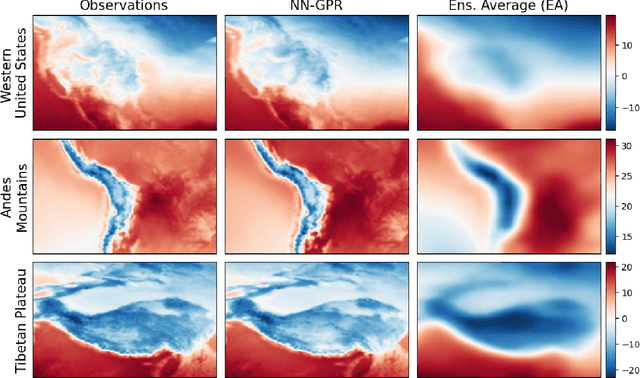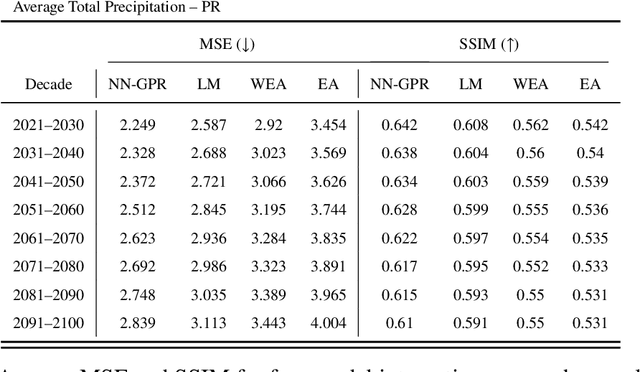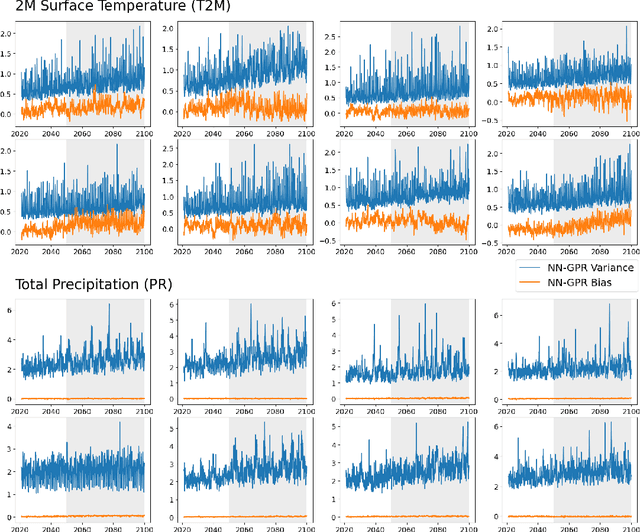Ryan Sriver
Quantifying uncertainty in climate projections with conformal ensembles
Aug 13, 2024Abstract:We introduce conformal ensembling, a new approach to uncertainty quantification in climate projections based on conformal inference. Unlike traditional methods, conformal ensembling seamlessly integrates climate models and observational data across a range of scales to generate statistically rigorous, easy-to-interpret uncertainty estimates. It can be applied to any climatic variable using any ensemble analysis method and outperforms existing inter-model variability methods in uncertainty quantification across all time horizons and most spatial locations under SSP2-4.5. Conformal ensembling is also computationally efficient, requires minimal assumptions, and is highly robust to the conformity measure. Experiments show that it is effective when conditioning future projections on historical reanalysis data compared with standard ensemble averaging approaches, yielding more physically consistent projections.
Multi-model Ensemble Analysis with Neural Network Gaussian Processes
Feb 08, 2022



Abstract:Multi-model ensemble analysis integrates information from multiple climate models into a unified projection. However, existing integration approaches based on model averaging can dilute fine-scale spatial information and incur bias from rescaling low-resolution climate models. We propose a statistical approach, called NN-GPR, using Gaussian process regression (GPR) with an infinitely wide deep neural network based covariance function. NN-GPR requires no assumptions about the relationships between models, no interpolation to a common grid, no stationarity assumptions, and automatically downscales as part of its prediction algorithm. Model experiments show that NN-GPR can be highly skillful at surface temperature and precipitation forecasting by preserving geospatial signals at multiple scales and capturing inter-annual variability. Our projections particularly show improved accuracy and uncertainty quantification skill in regions of high variability, which allows us to cheaply assess tail behavior at a 0.44$^\circ$/50 km spatial resolution without a regional climate model (RCM). Evaluations on reanalysis data and SSP245 forced climate models show that NN-GPR produces similar, overall climatologies to the model ensemble while better capturing fine scale spatial patterns. Finally, we compare NN-GPR's regional predictions against two RCMs and show that NN-GPR can rival the performance of RCMs using only global model data as input.
 Add to Chrome
Add to Chrome Add to Firefox
Add to Firefox Add to Edge
Add to Edge